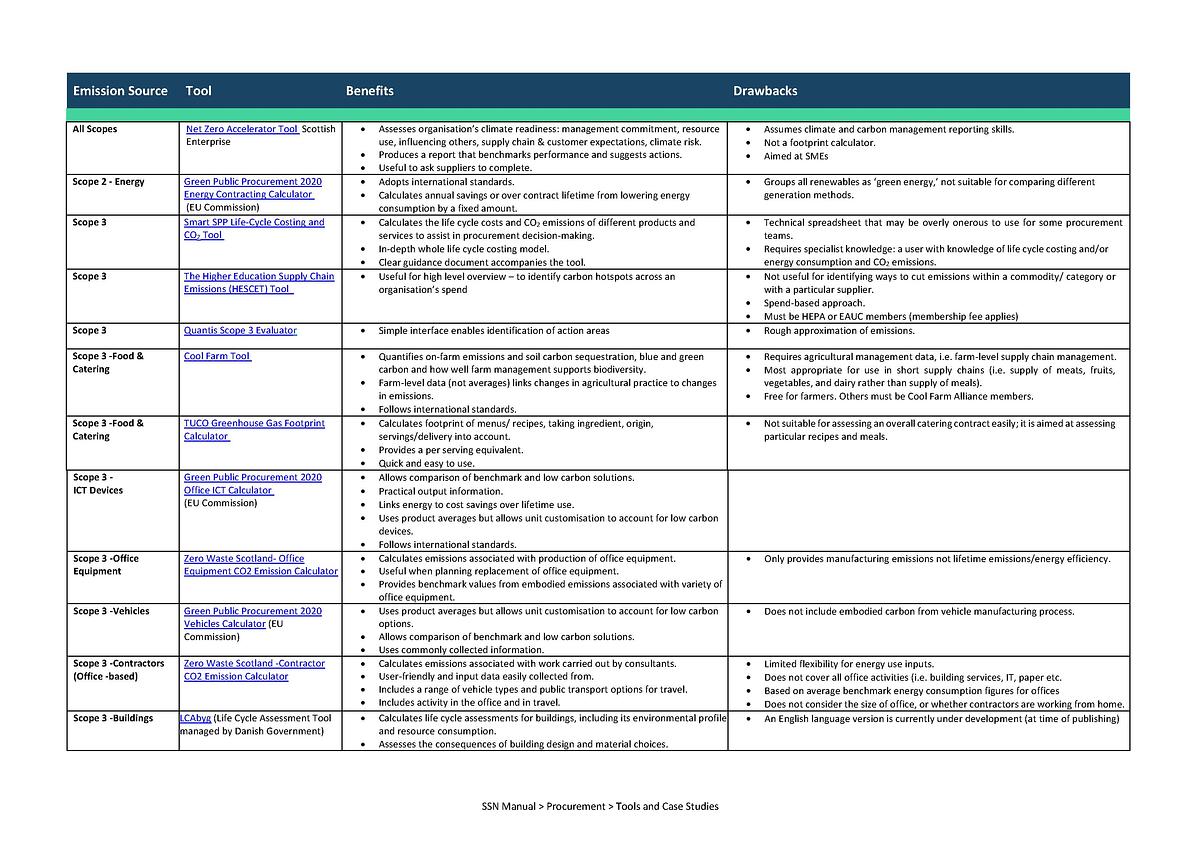Procurement Emissions Tools
Indirect scope 3 emissions encompass all upstream and downstream activities in the value chain. These can include raw material extraction and processing, product manufacture, purchased goods and services, product use by consumers, waste management of products and the transportation of materials and products in between.
Life cycle costing (LCC) can be applied to supply chains as a method to consider all the costs (including externalities) that will be incurred during the lifetime of the product or service. It is worth mentioning that at this point in time the calculation of scope 3 emissions can have significant uncertainty and therefore too much weight should not be placed on these figures alone. However, this uncertainty should not be a barrier to reporting. To limit the burden on bidders, LCC should only be used where relevant and proportionate to the impact of the product or service.
There are many online tools and calculators for assessing emissions. The list provided below is not an endorsement or recommendation of any specific tool but intended as examples. They are free unless otherwise stated. Practitioners must decide which tools are relevant and proportionate for use in specific circumstances. The range of scope 3 emission categories will differ between sub-sectors and individual bodies and should be reflected on, therefore reporting boundaries must be reviewed accordingly. Download list.

Educational Resources and Guidance:
- The Climate Literacy for Procurers e-learning course (Scottish Government, 2021) is intended to give procurers confidence to minimise risks and maximise opportunities associated with climate change. It comprises 3 modules:
- Introduction to Sustainable Public Procurement
- Climate Literacy
- Circular Procurement and Supply
- The Supply Chain Sustainability School offers free training resources, including workshops, courses, and webinars.
- Zero Waste Scotland provides guidance and support on specific business areas including food and drink, and construction. Their Circular Economy Accelerator provides support and free worksheets to determine opportunities although predominantly for SMEs.
- Improving emissions assessment of Scottish Government spending decisions and the Scottish Budget Climate X Change, June 2022.
- Buying Green! – A Handbook on Green Public Procurement EU Commission, 2015.
- Climate and Procurement presentation, Jo Mitchell & Evelyn Rae, Scottish Government, SSN Annual Conference, May 2022.
- Driving Energy Efficient Innovation through Procurement- A practical guide for public authorities, Smart SPP, 2011.
- Going Green: Best Practices for Public Procurement, prepared by the OECD, is a collection of best practices for green public procurement at national and sub-national levels.
Case Studies
- Reducing carbon footprint in hybrid cloud hosting services for IT shared services, Enterprise Information Services.
- Sensor monitoring equipment for social housing properties, Renfrewshire Council.
- Reducing embodied carbon through construction project design, The Cross Tay Link Road. These practices were developed with support from the City Region and Growth Deals team and have so far successfully demonstrated a reduction in carbon emissions through effective carbon management.
- Corporate Procurement Unit, Fleet Strategy - A Pathway to Zero Emissions Fleet, Glasgow City Council.
- Reducing carbon footprint in ICT upgrade, Glasgow Kelvin College.
- Facilities Services Management, Scottish Government.
- Green Public Procurement 2020 Energy Contracting Calculator 20 Energy Contracting Calculator ip with Canon for Print Managed Services to achieve significant efficiencies in their print and document management strategy, Fife Council.